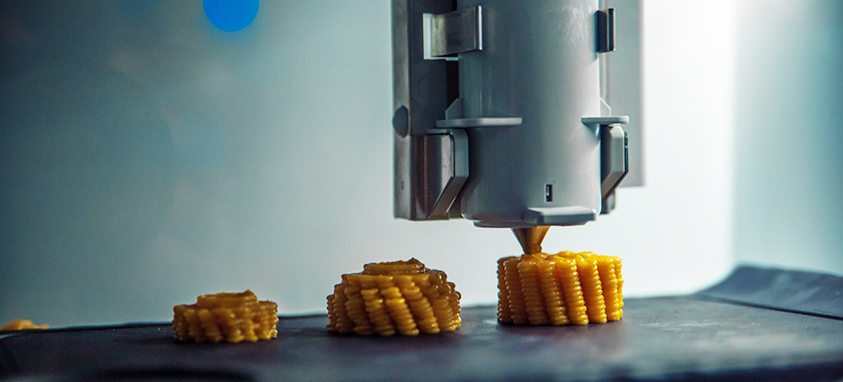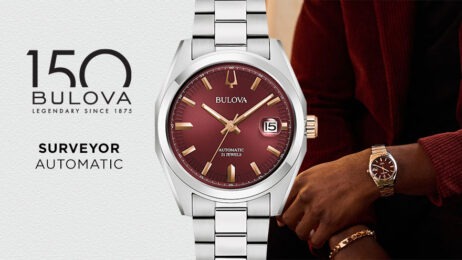You’ve heard about 3-D printing, and maybe have even tried it. The once-fantastical concept is now available to everyone, allowing infinite uses, from creating headphone holders to musical instruments to medical prosthetics. But have you heard of 3-D-printed food? Lynette Kucsma has more than heard of it. As cofounder and chief marketing officer of Natural Machines, she saw that chefs wanted to create ever-more intricate platings. “3-D food printing was the best way to solve that problem,” she says.
How 3-D Printing Works
Today, you can find affordable 3-D printers everywhere. The concept is simple: Load the printer with colored filament, enter a design and voila—you now have a plastic, tangible object. To overcome size limits in the current generation of printers, multiple pieces can be assembled into a finished product—think violins or R2-D2 replicas. If your imagination can create it, so can a 3-D printer.
Natural Machines vs. Traditional 3-D Printers
In creating what she says is the world’s first 3-D food printer, Kucsma decided to break the mold of conventional 3-D printers. She wasn’t creating things in plastic; she wanted edible designs. Her solution is Foodini, which prints sweet desserts to savory entrees. “I’m passionate about healthy eating, technology and doing the right thing,” Kucsma says. “All of those things come together for me at Natural Machines.”
She swears Foodini is as easy to use as any kitchen appliance. The device comes with stainless-steel food capsules into which you put your own fresh ingredients. “This is real food, 3-D printed,” says Kucsma.
To print food, Foodini connects to the internet. The user then uses the device’s touch screen, a laptop or tablet to input a recipe and design. Foodini instructs which ingredients to insert in each capsule, and the printing process begins.
Let’s say you want to print fresh ravioli. The ingredients go into the capsules (the appliance comes with five). Foodini then prints the different layers of each raviolo dumpling—from pasta to filling to pasta again—that you pop in boiling water to cook. No more time spent individually filling each raviolo when making it from scratch! Choosing your own ingredients can mean healthier options, and fewer calories or carbohydrates, if you wish. Kucsma says 3-D-printed food beats out pre-made, pre-packaged foods in taste, as well.
Foodini comes with extruding—printing—nozzles of varying sizes, so there’s no need to blend ingredients before putting them in capsules. For example, you can 3-D print raw ground beef with minced onions and fresh herbs into patties, and they come out ready to be grilled. It works with raw foods, too.
Foodini in the Event Planner’s World
Foodini is useful not only for at-home printing—it can also be used for events as well. “Chefs are interested in Foodini for creating food presentations that aren’t possible by hand, and automation,” says Kucsma.
Foodini is expensive, as kitchen appliances go—$4,000, online—but Kucsma believes the time they save will prove worth the price. Chefs can focus elsewhere while Foodini takes control of repetitive shaping or filling. Flatter items, such as crackers or simple plate decorations, take only a few minutes to print, while more intricate designs can take up to 20 minutes. The technology has already been implemented by caterers and food service providers, and Kucsma says Michelin-starred chefs are a “top client segment.”
If there’s a downside at present, it’s time. How long it takes Foodini to print is based both on intricacy and quantity. In the ravioli example, dinner for a family of four would take longer to print than a single raviolo, making it most suitable for smaller events or food that can be made in advance and then stored or refrigerated. Foodini’s strength is in creating designs most chefs struggle to create by hand—perfect for wowing guests with dessert or an intricate appetizer rather than an entire three-course meal.
The Future of Foodini
Natural Machines is imagineering pre-filled capsules, much like Keurig coffee capsules, to eliminate the need to buy your own ingredients. Kucsma also hopes Foodini will be used to customize meals for individuals with special dietary needs. “If I’m low on Vitamin D and Iron, I’ll be able to up those nutrient levels in my freshly printed breakfast bar,” she says. While the original Foodini is available for purchase now, she also believes that Natural Machines will eventually produce 3-D food printers “to meet all budgets and functionality requirements.”





